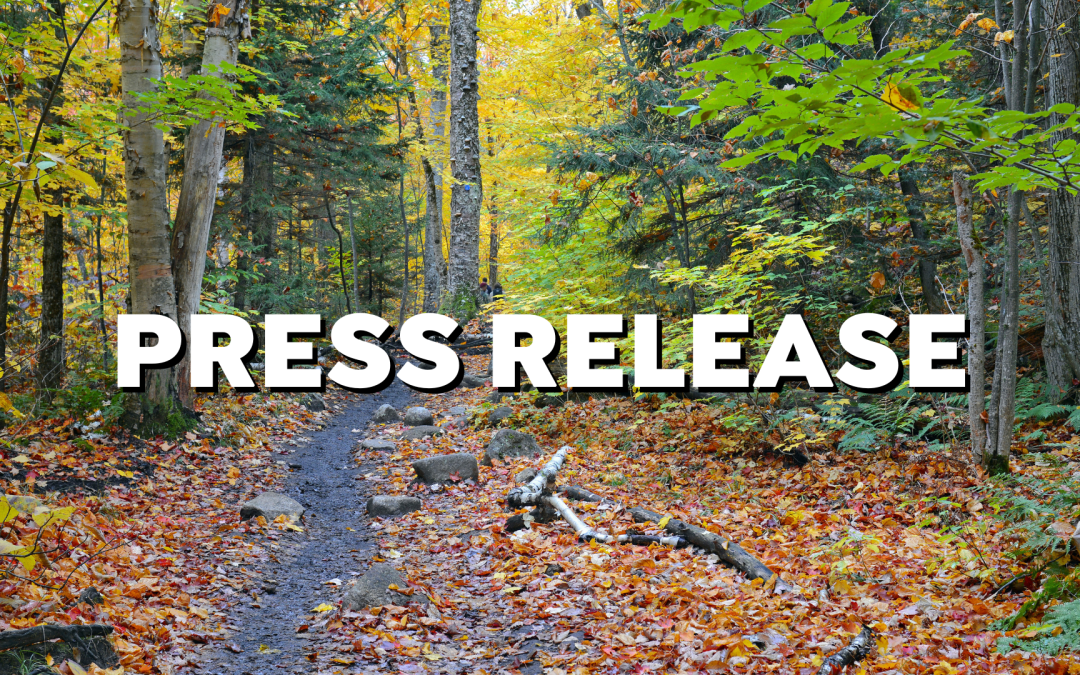Montpelier – Today, in a major win for the protection of Vermont’s forests, wildlife and rural community resilience in the face of climate change, the Vermont Senate voted 20-7 to advance H.126, an act related to community resilience and biodiversity protection. The House already passed a similar version of the bill on a strong 108-36 vote. The Agency of Natural Resources and Vermont Housing and Conservation Board support the bill.
The U.S. Forest Service estimates that Vermont is losing upwards of 12,000 acres of forestland every year. If this rate continues, over 300,000 acres of Vermont’s forestland will be lost by 2050 with significant negative consequences for ecosystem health, habitat for wildlife species, the ecological viability of natural lands, and our working lands economy.
H.126, referred to as the “30 x 30” bill, elevates land conservation as a necessary strategy to promote the health of Vermont’s forests, including habitat connectivity, biodiversity protection, outdoor recreation, sustainable forestry, public health and climate resilient communities. This policy also supports implementation of the Vermont’s Climate Action Plan’s goal of conserving 30% of Vermont’s land by 2030, and even go one step further to 50% by 2050.
“We applaud the Senate for its overwhelming vote to advance H.126, recognizing that Vermont’s most effective and efficient contribution to protecting biodiversity and building climate resilience, especially in our rural communities, is to conserve an intact and connected landscape with a mix of management approaches,” said Jamey Fidel, Forest Program Director at Vermont Natural Resources Council. “This bill gives us a great opportunity to plan for maintaining ecologically important areas in Vermont, and we look forward to working with diverse partners to begin this vital conservation work.”
Given increased current and future development pressures on Vermont’s landscape, alongside the dual challenges of biodiversity loss and climate change, this bill calls for the creation of a statewide conservation plan that would include an inventory of conserved land, and the necessary conservation approaches to maintain a resilient Vermont, including natural and working lands.
“The Vermont Land Trust urges action on this bill,” said Tracy Zschau, Interim President, “The ecological, economic, and community benefits of conserved lands are essential to the wellbeing of Vermont. Protection of these lands must accelerate at a faster pace as the impacts of climate change grow more severe, and development pressures continue to mount.”
“We thank all the Senators who voted today to support biodiversity and land conservation. Not only is this policy in line with our federal and international commitments to conservation, it’s also a huge opportunity to protect what we all love about Vermont – our natural and working lands and diverse wildlife,” said Lauren Hierl, Executive Director of Vermont Conservation Voters.
“The Nature Conservancy in Vermont is grateful to the Senate for its recognition of the biodiversity crisis we are facing through its support of H.126,” said Lauren Oates, Director of Policy & Government Relations. “Identifying and protecting Vermont’s natural and working lands to meet statewide biodiversity and conservation goals is paramount to our collective adaptability to a changing climate.”
“This legislation represents a vital investment in a conversation that Vermonters need to have about the future of our state at a moment when we face unprecedented challenges to our natural and human communities,” said David Mears, Audubon Vermont Executive Director. “In the same way that our forests host a concert of birdsong, from the musical fluting calls of the Hermit Thrush to the signature and cheerful refrain of the Black-Capped Chickadee,” he continues, “all Vermont’s voices need to be heard as we develop goals and strategies for the protection of Vermont’s forests, fields, and waters.”
“We applaud the Legislature’s vision to conserve and restore the places that matter most to Vermont’s communities, the ecological systems we depend upon, and our present and future well-being,” said Shelby Semmes, Vice President, New England Region of Trust for Public Land. “These ambitious goals can be achieved only through a commitment to local needs and voices and a conservation ethic that leaves no one behind–as everyone deserves access to the outdoors and its benefits.”
Should the bill become law, the Agency of Natural Resources, with support from the Vermont Housing and Conservation Board, will work with stakeholders such as private landowners, land trusts, conservation groups, working lands enterprises, outdoor recreation businesses, planners, Indigenous groups, and the public at-large, to determine the tools, programs, and mechanisms needed to advance to conservation of 30% of our land and water by 2030 and 50% by 2050.
###
Contact:
Jamey Fidel, Vermont Natural Resources Council, jfidel@vnrc.org
Lauren Hierl, Vermont Conservation Voters, lhierl@vermontconservationvoters.org
Lauren Oates, The Nature Conservancy in Vermont, lauren.oates@tnc.org
David Mears, Audubon Vermont, David.Mears@audubon.org
Tracy Zschau, Vermont Land Trust, tracy@vlt.org
Shelby Semmes, Trust for Public Land, shelby.semmes@tpl.org

